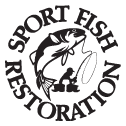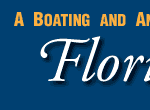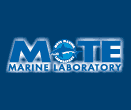CONTACT US:
Florida Fish and Wildlife
Conservation Commission
Fish and Wildlife
Research Institute
100 Eighth Avenue SE
St. Petersburg, Florida 33701
727-896-8626
|
|
|
Mote Marine Laboratory
Tropical Research Laboratory
24244 Overseas Hwy.
Summerland Key, FL 33042
305-745-2729
|
|
|

|
|
This project was funded in part by a grant awarded from Mote Marine Laboratory's Protect Our Reefs Grants Program, which is funded by proceeds from the sale of the Protect Our Reefs specialty license plate. Learn more at .
|

|
|
Additional funding for this project was obtained through the Federal Aid in Sport Fish Restoration Fund.
|
|
|
 |
Congress established the Florida Keys National Marine Sanctuary (FKNMS) in November 1990 to protect the region's valuable and unique resources. Mounting ecological threats to the Keys' coral reef ecosystem prompted this designation. Such threats included exploratory oil drilling, seagrass die-offs, coral bleaching and coral disease, declining reef-fish populations, deteriorating water quality, and groundings of large ships on the reef tract.
The sanctuary comprises approximately 2,900 mi2 of water and submerged lands. Biscayne National Park and Everglades National Park borders the Sanctuary to the north, and the Sanctuary surrounds Dry Tortugas National Park to the west. The sanctuary's landward boundary is the mean high-water line; its southern boundary in the Florida Straits generally follows the 300-foot depth contour. Much of the sanctuary lies within state waters and the sanctuary is jointly managed by NOAA and the State of Florida under a co-trustee agreement. Numerous state parks and preserves lie within the sanctuary's boundaries.
Visitors to the Sanctuary can swim, dive, snorkel, fish or conduct any activity that is not expressly prohibited by Sanctuary regulations. These regulations apply throughout the entire area of the Sanctuary, including other protected areas and Sanctuary zones. Sanctuary zones are areas where managers can provide additional resource protection while minimizing the effect of activities like fishing. Five classes of zones are used with the Sanctuary:
- Sanctuary Preservation Areas (SPAs) - There are 18 small SPAs that protect popular shallow coral reefs. In addition to Sanctuary-wide regulations, special regulations have been set in place in these areas in order to protect resources. Regulations for this zone type are designed to limit consumptive activities and to separate users engaged in different kinds of activities. Diving, snorkeling and boating are allowed inside these zones.
- Special Use Areas - There are four areas designated: Conch Reef, Tennessee Reef, Looe Key (patch reef), and Eastern Sambo Reef. These are all designated as research-only areas. These zones have the same regulations as SPAs. In addition, no person may enter these areas except as specifically authorized by a valid permit.
- Ecological Reserves - In addition to Sanctuary-wide regulations, special regulations have been set in place in these areas in order to protect resources.
- Existing Management Areas - Sanctuary regulations have been established to complement those in existing management areas, including Looe Key and Key Largo Management Areas, as well as the Great White Heron and Key West National Wildlife Refuges.
- Wildlife Management Areas (WMAs) - There are 27 WMA's. The majority of these areas (20) fall under the jurisdiction of the U.S. Fish and Wildlife Service (USFWS) and Sanctuary regulations have been established to complement the existing USFWS management plan. Public access restrictions in these areas include idle speed only/no wake, no access buffer, no motor, and limited closures.
To find out more information about zones in the Florida Keys and their regulations, visit FKNMS' Sanctuary Marine Zones Web site.
|
|
If you are out snorkeling, diving, fishing, paddling, or boating and see anything that may be unusual or out of the ordinary in Florida Keys waters (including lionfish), please record the location, date, and time, and contact the Marine Ecosystem Event Response and Assessment (MEERA) project. They can be reached by phone (305-395-8730), e-mail, or online.
If you have any questions, comments, or suggestions about this Web site, please e-mail us at Boating_Guides@MyFWC.com.
Would you like to receive notices of changes to this Web site and the Boating and Angling Guides to the Upper, Middle, or Lower Keys? If so, please e-mail us and include SUBSCRIBE-KEYS in the subject line.
|






















